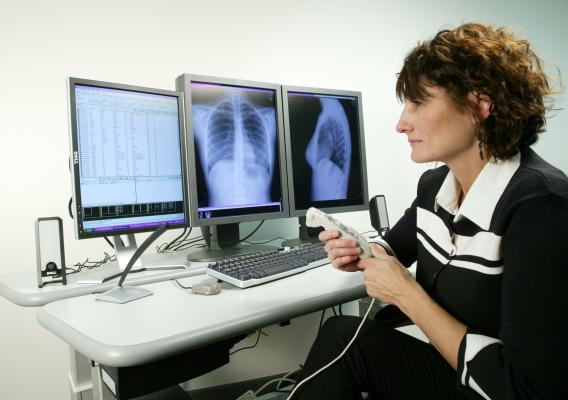
February 3, 2017 — According to a new report by the Harvey L. Neiman Health Policy Institute, physician-focused payment models (PFPMs) provide a compelling opportunity for radiologists to demonstrate and be rewarded for their unique contributions toward patient care. The report also said PFPMs may foster greater radiologist participation in advanced alternative payment models (APMs) under the Medicare Access and CHIP Reauthorization Act (MACRA) of 2015. The study is published online in the Journal of the American College of Radiology (JACR).
“MACRA will look to increasingly shift physicians into APMs that incentivize quality and value,” said Andrew Rosenkrantz, M.D., MPA, lead study author and a Neiman Institute affiliate research fellow. “PFPMs will provide a path for physician specialty societies to develop and propose new practice models that will allow a more diverse range of physician specialists to participate in alternative payment models.”
MACRA describes APMs as new approaches to paying for medical care that incentivizes higher quality and value. MACRA incentivizes increasing participation in APMs by all physician specialties over the coming years. A fraction of APMs will meet criteria to be deemed an Advanced APM. Clinicians who are a Qualifying Professional in an APM will receive substantial benefits under MACRA, including an automatic 5 percent payment bonus regardless of their performance and savings within the APM, as well as a larger increase in fee schedule payment rates beginning in 2016. According to the report, existing APMs meeting the criteria to be Advanced APMs are most relevant to primary care physicians, with relatively limited opportunity at present for radiologist participation.
PFPMs are APMs that target the quality and cost of physician services and must address a new issue or specialty compared with existing APMs. PFPMs are intended to foster a much more diverse range of PFPMs that encompass a wider range of specialties.
“As PFPMs provide a compelling opportunity for radiologists to demonstrate and be rewarded for their unique contributions toward patient care, radiologists should embrace this new model and actively partner with other stakeholders, including health services researchers, in developing radiology-relevant PFPMs,” noted Bibb Allen Jr., M.D., FACR, chair of the Neiman Institute advisory board and past chair of the American College of Radiology Board of Chancellors.
The PFPM Technical Advisory Committee (PTAC), comprised largely of primary care physicians and health policy experts, is a newly formed agency to review the proposed PFPMs and make recommendations regarding their adoption to the Centers for Medicare and Medicaid Services (CMS). PTAC is not required to consult with experts when reviewing specialist-proposed new PFPMs.
For more information: www.neimanhpi.org


 December 10, 2025
December 10, 2025 









